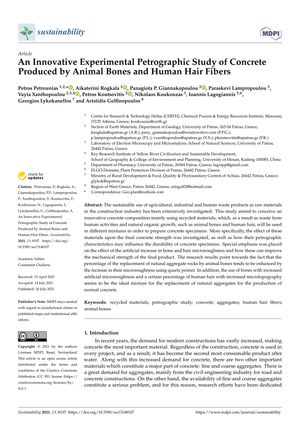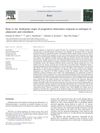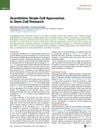An Innovative Experimental Petrographic Study of Concrete Produced by Animal Bones and Human Hair Fibers
July 2021
in “
Sustainability
”

TLDR Concrete made from animal bones and human hair is stronger and more environmentally friendly than traditional concrete.
The study aimed to develop a sustainable concrete composition using recycled materials, specifically animal bones and human hair. The research found that replacing natural aggregate rocks with animal bones, enhanced by increasing their microroughness using a quartz primer, and a certain percentage of human hair with increased microtopography, improved the mechanical strength of the final product. The study produced 72 concrete cube specimens from 18 different mixtures. The energy required to treat animal bones and human hair was found to be less than that required for the re-extraction of natural aggregates, reducing the environmental footprint. The concrete strength ranged from 23.00–30.00 MPa after 28 days of curing, with specimens made by animal bones and human hair coated with quartz primer showing a strength value of 29.00 MPa. The addition of human hair helped prevent crack formation and increased the tensile strength of the concrete.



